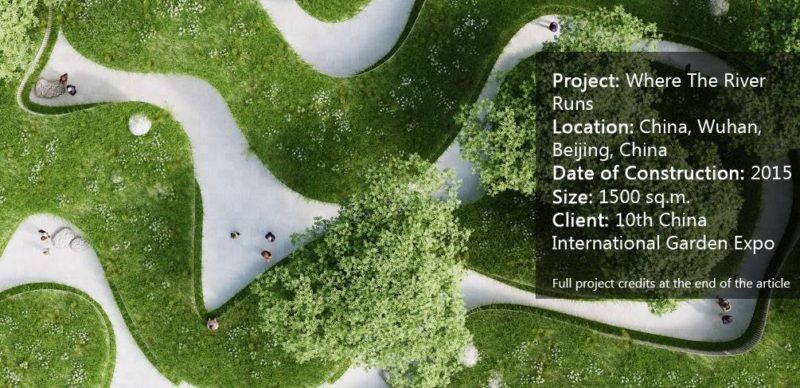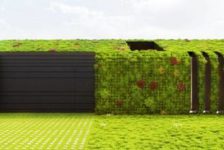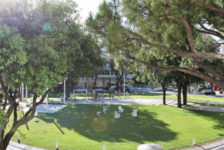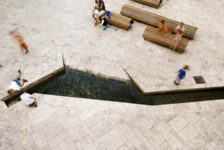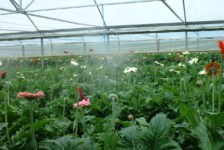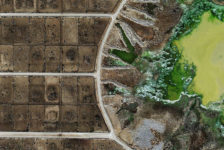Where the River Runs, by Penda, inside the 10th China International Garden Expo, Wuhan, Beijing, China Have you noticed that “Sustainability” seems to have become the word of the day everywhere? Clearly, this situation is going to ruin its true meaning, if not stopped. Luckily, there are practices and measures capable of recalling back its deep meaning, as our writer Tania Ramos Gianone reminds us in her article “10 Practices Showing That “Sustainability” is More Than Just a Buzzword!”. In the recent years, China has gained more and more attention, thanks to some interventions that have shown a growing interest on sustainability, as our writer Michelle Biggs reports in her article “Is China Transforming its Relationship with Water? A Look at the Aiyi River Landscape Park”. Unfortunately, none of them can be compared to the newest project of PENDA, titled “Where the river runs”, which was built for the 10th China International Garden Expo, Wuhan, Beijing, China, plot 1590.
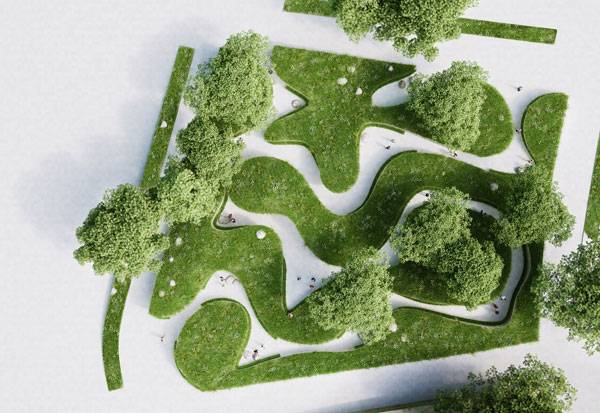
Where the rivers runs. Image courtesy of Penda
Where the River Runs by Penda
The project, of almost 1500 sq.m., has won the 2nd prize at the international competition organized for the 10thChina International Garden Expo, whose main theme was “Eco-Expo – Green Life”. The concept of the whole project was to make people understand how clean water is important for both the environment and a healthy life. In order to do so, PENDA team realized a design capable of evoking the path of a river and its natural function with just a few elements: wildflowers, grasses and lawns. With this idea in mind, came the title of the project, “Where the river runs”.

Where the rivers runs. Image courtesy of Penda
Connecting With Heritage
The 10th China International Garden Expo was held in Wuhan, a city located at the intersection of the Yangtze and Han rivers. Thanks to this special location, in no time, Wuhan became an important hub for trade as the rivers brought goods from around the world. According to PENDA, the idea to focus on water came from Wuhan’s long-term relationship with waterways. “But, the rivers didn’t just bring wealth to the city, it also brought a rich flora and fauna to the people”, says the team. The garden, therefore, reflects the historical and cultural connection between this region and water.
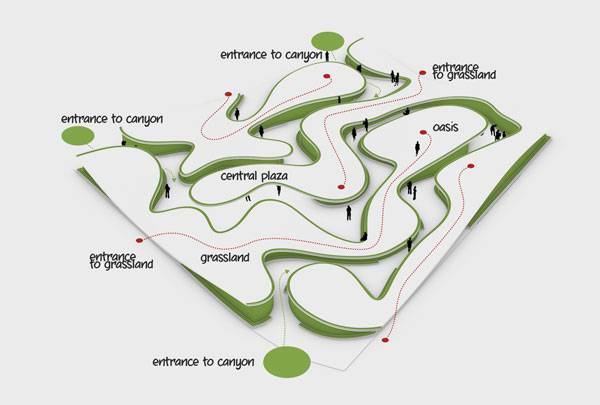
Where the rivers runs. Image courtesy of Penda
Different Landscapes
The design of the project links the plot n°1590, where the garden has been built, to the closest plots through a river-like canyon path that can be entered from 3 sides. By walking inside the garden, visitors can experience different kind of landscapes such as narrow cliffs, caves, grassland and low narrow canyons. Some parts of the site have been shaped with different heights to create gentle hills and valleys. In this way, the plot seems like a real piece of landscape crossed by a river.
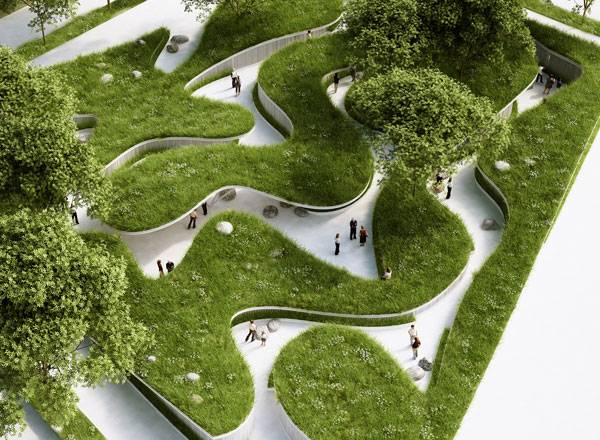
Where the rivers runs. Image courtesy of Penda
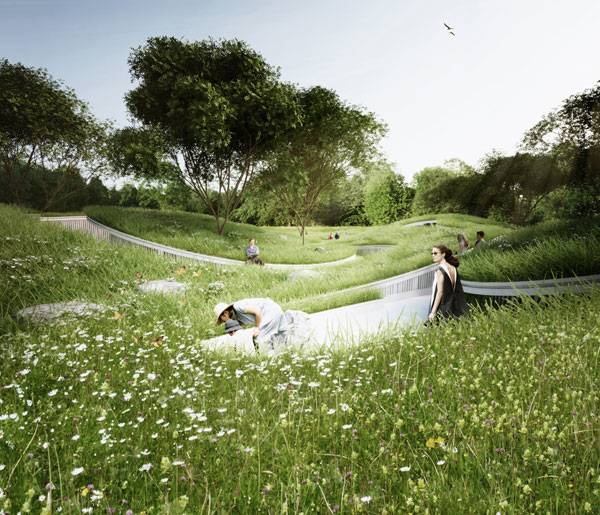
Where the rivers runs. Image courtesy of Penda
A Sustainable Project
“We believe that, in present times, a sustainable way of construction is more valuable than ever“, explained the architects and studio co-founders, Dayong Sun and Chris Precht. Attention to sustainable techniques is what identifies PENDA in most of its projects as well as being gentle to the environment. In “Where the river runs”, there is a system to collect rainwater in the underground tanks where it is stored to be reused for watering the plants during the festival.

Where the rivers runs. Image courtesy of Penda
A Deep Meaning
One of the most interesting characteristics of the project is, of course, its interacting function. Visitors who enter the garden are encouraged to interact with it, as they are given seeds of different vegetation species to plant at the borders of the canyon.
Allowing the Visitors to Become Part of the Landscape
The amazing thing is that, during the exhibition time itself, all the seeds that have been planted will begin to sprout and visitors will be able to observe them grow and feel the importance of their contribution to the environment. In this way, they become a part of the river life, acting as a river and bringing life along the riverbed. They can understand how much clean water and pure air are important for a healthy environment. And, THAT is the focus of the whole garden.
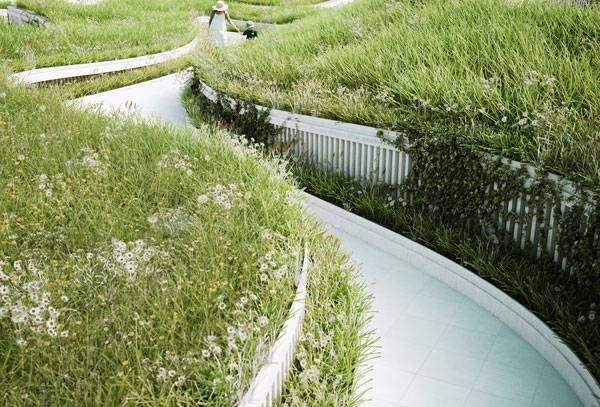
Where the rivers runs. Image courtesy of Penda
The Importance of Water
This project can be defined as an ode to water and, indeed, water source is the main theme of this landscape design. From one hand, the whole garden aims at evoking that natural element, on the other, it presents some constructive techniques to prevent its waste during the exhibition. As PENDA points out, the people’s task is to find a way to preserve water sources, and that can be possible only if people become aware of its importance for our planet and ourselves.
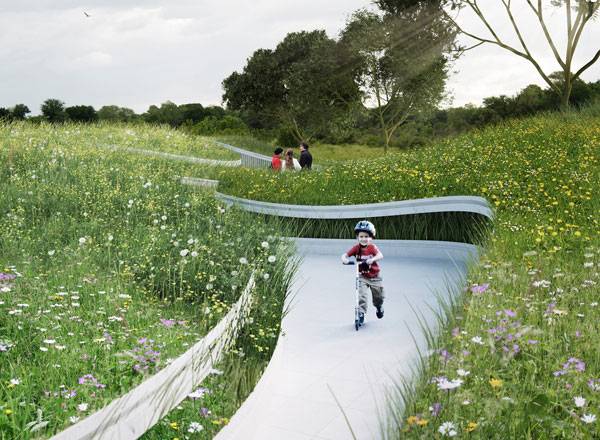
Where the rivers runs. Image courtesy of Penda
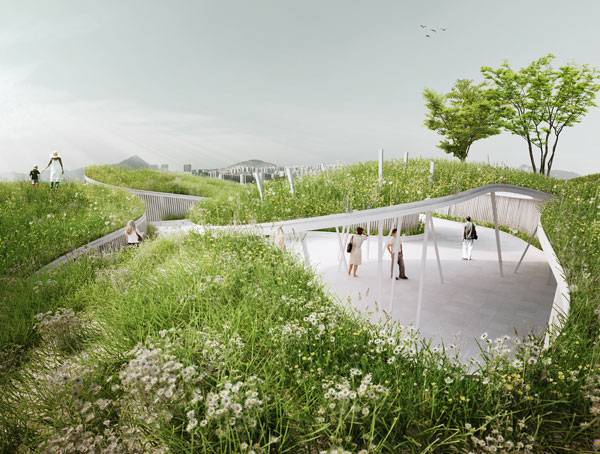
Where the rivers runs. Image courtesy of Penda
The People Are The Water
Here, people feel as if they were the river, they follow its path and take part in its natural action. In that way, they understand why the maintenance of our natural environment depends on having clear and pure water. This project is an example of how landscape architecture can create awareness among people on important topics as sustainability. Landscape architects need to develop designs capable of gaining people’s attention, in order to let them understand how to grow eco-friendly behaviours, as our writer Paul Mc Atomney reports in his article “6 Reasons Why Our Future Depends On Landscape Architecture”. From the concept idea to the connection with the site’s heritage, the project shows different landscapes and sustainable techniques, concealing a deep meaning aimed at making people reflect at the real importance of water. While walking through PENDA’s garden, visitors will reflect about natural resources and start asking themselves some questions, “How will global warming effect the natural resources? And, will there be enough clean water, if the pollution and population of our planet continues to grow as expected?” Therefore, this project clearly shows that it does not really depend on how big the intervention is but, on how strong is the idea behind it. Tell us what you think Leave a comment
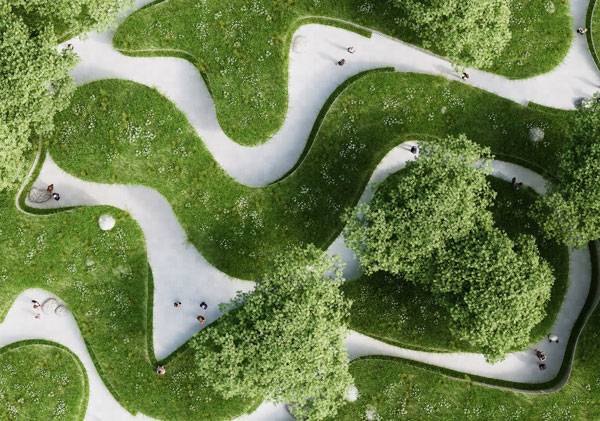
Where the rivers runs. Image courtesy of Penda
Full Project Credits For Where the River Runs
Project Name: Where The River Runs Location: Plot 1590, 10th China International Garden Expo, Wuhan, Beijing, China Date of Construction: 2015 Size: 1500 sq.m. Penda Team: Chris Precht, Dayong Sun, Bai Xue, Quan He, Li Pengchong, Frank Li, Snow Sun Client: 10th China International Garden Expo Award: 2nd place Facebook: www.facebook.com/pendastic Website: www.home-of-penda.com Recommended Reading:
- Becoming an Urban Planner: A Guide to Careers in Planning and Urban Design by Michael Bayer
- Sustainable Urbanism: Urban Design With Nature by Douglas Farrs
Article by Elisa A. M. Varetti Return to Homepage
Published in Blog


